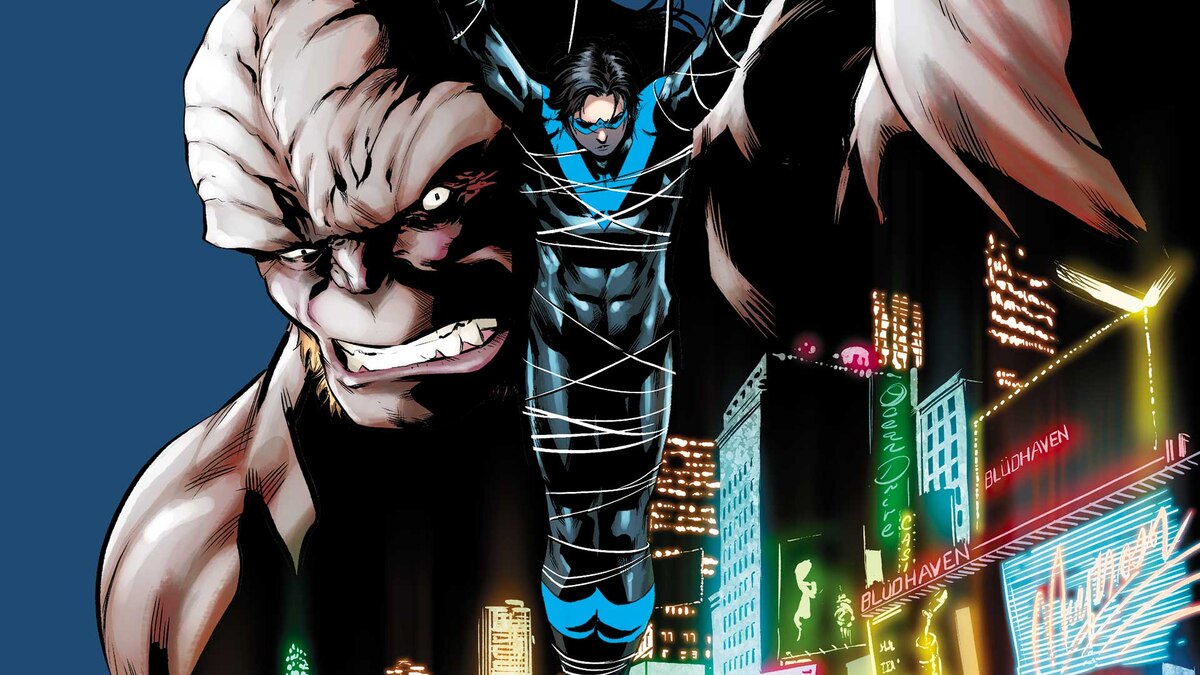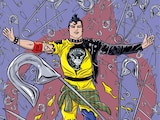Tim Seeley penned his recent NIGHTWING run with one eye firmly looking back at the defining Chuck Dixon Nightwing solo series from the 1990s. Like so many comic book readers, Dixon’s work was my first reading experience with Nightwing outside of THE NEW TEEN TITANS or the larger Batman Universe. But even by modern sensibilities, it is awesome.
If you haven’t checked out Dixon’s Nightwing series, you should. It’s all available digitally and has recently been reprinted in a sweet new set of collections.
The reason I’m starting this review by mentioning the Dixon run is because of how prevalent the influences are in NIGHTWING VOL. 4: BLOCKBUSTER. This is Seeley’s penultimate volume writing for Dick Grayson and readers who have been with this story from the beginning can begin to see these ideas and these characters coalescing in what is likely a powerful push toward the finish line.

We’ve spent a lot of time with the Run-Offs (a support group for some of Nightwing’s lesser villains from that original solo series), and with Defacer, in particular. For the most part, I have really enjoyed seeing this mix of strange minor villains come together to form a family and develop a larger depth of personality than there was room for the first time around. The found-family that they all create alongside Dick Grayson helps these new personalities flourish, while at the same time subtly pushing a powerful narrative about redemption—to the point where the death of one of the Run-Offs is actually much more arresting than I initially thought it might have been.
While Dick gets to see this group of people that he’s gone from fighting to counselling learn how they can exist without their criminal personas, his Nightwing persona always seems to eat up more and more of his time—a hard lesson for his girlfriend Shawn, aka Defacer. Sadly, their relationship isn’t long for this world. But while reading about a breakup is sad, Seeley gives us little glimpses of Nightwing’s most recent interactions with Batgirl as the personifications of Shawn’s insecurities, and even though these moments are probably supposed to be sad, I was just completely geeked to have Dick and Babs together again, even for a brief moment.
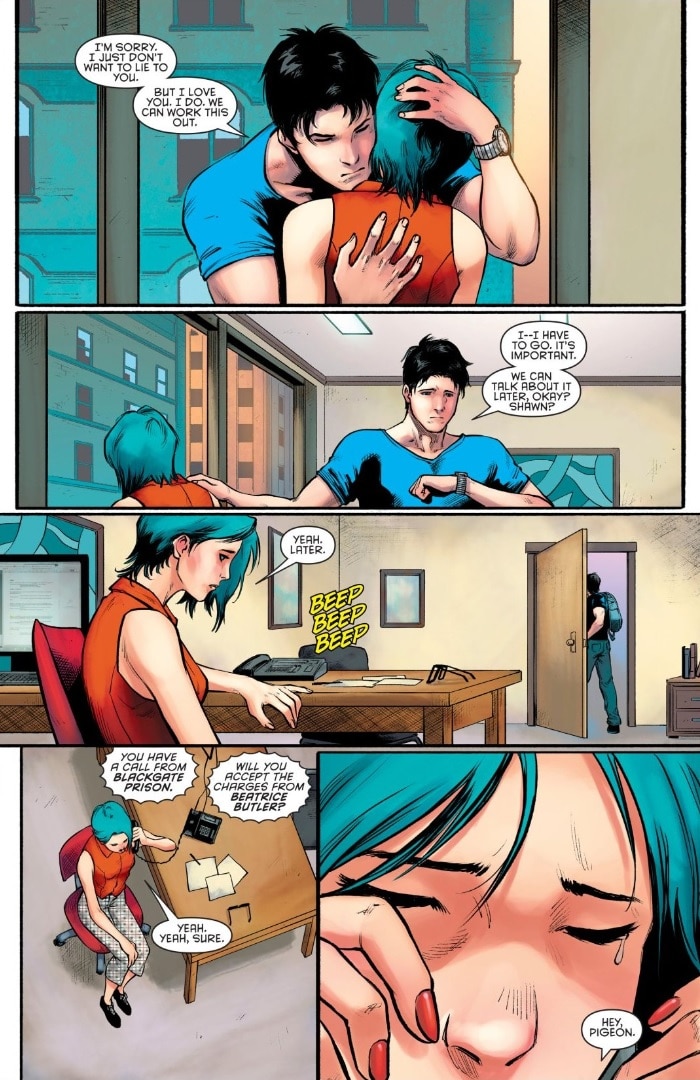
Amidst the dueling narrative of Dick losing both his girlfriend and a member of the Run-Offs, he is dealt the crushing blow of a new Blockbuster emerging onto the scene. Roland Desmond is the brother to the original Blockbuster, Mark Desmond. Nightwing’s rogue gallery has always lacked the verve and vivacity of Batman’s, and Blockbuster is, arguably, the best villain that Nightwing has ever faced who didn’t start out as a Batman villain. Roland, unlike his brother, has discovered a way to retain his sly intelligence even when he is powered up. This is a wildly smart (pun intended) update on the villain. Plus, the introduction of this character does give both Dick Grayson and his vigilante alter ego a focus that he so dearly needs in the wake of his messy split with Shawn.
In a final, equally clever homage, Seeley reunites Dick with his ex-girlfriend Helena Bertinelli for a couple issues that find the pair teaming up to take down the seemingly out-of-control Spyral that coolly references the GRAYSON series that Seeley once wrote along with now-BATMAN scribe, Tom King.
If those issues were particularly up your alley then you can check out more Grayson here.
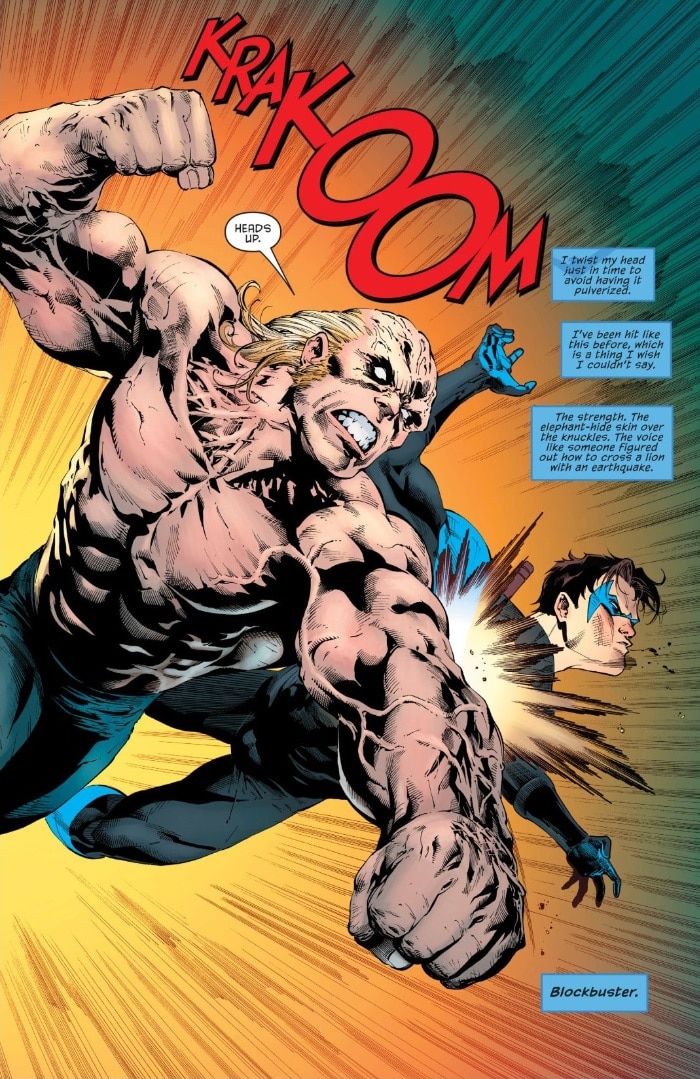
The art that backs up all of these really compelling story elements in Blockbuster is just out of this world. There are plenty of in-universe and in-fandom jokes about Nightwing’s costume and some of his physical assets, and these are all both celebrated and elevated by artist pair Javier Fernandez and Miguel Mendonca.
Fernandez’s work is nothing short of electric. The fight and chase scenes that are plentiful throughout Blockbuster leap off the page and cement the truth that a Nightwing story can—and should—be just as epic and as edgy as any Batman comic that is sitting next to it on the shelf. I am especially geeked by his layouts and the way that Fernandez uses the comic book medium, sometimes breaking traditional panel layouts. His art seems to enjoy highlighting Nightwing as a gymnast.
Mendonca’s style is complimentary, while completely different. He draws the most beautiful people. Everything that Dick is feeling, like Shawn’s broken heart, are stunningly rendered in a way that feels realistic, yet elevated. There are many complicated emotional journeys going on in Blockbuster, and Mendonca’s work manages to hold the mirror up to nature, but the reflection is even better than the source material.
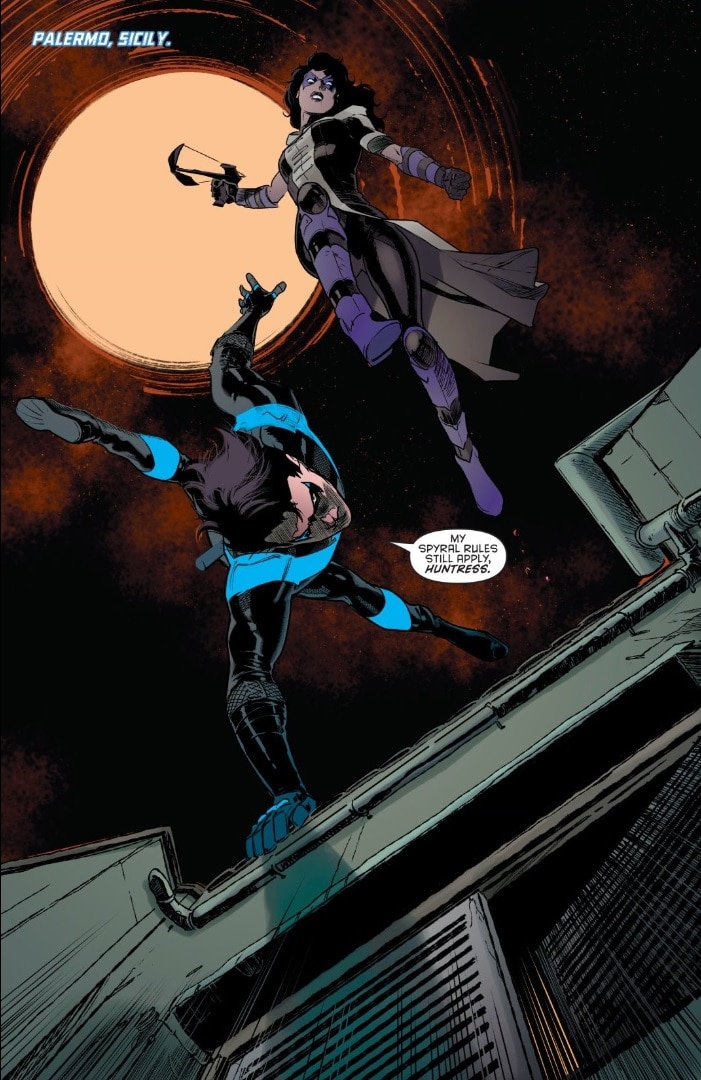
Colorist Chris Sotomayor provides a consistent color palette, so that the very different art styles feel grounded and of-a-piece. His Blüdhaven is brighter than the first time we met this suburb back in the 1990s, and it feels like a city on the rise with a lot of brightness set on a dark, dangerous background. I especially like the opportunities he takes to include Nightwing’s traditional blue in other places than Dick’s uniform.
With such artistic eye candy, I wanted to end with a shout out to letterer Carols M. Manguel, who handles the delicate balance of getting all the words on the page in a fluid, readable style without seeming to obscure any of the art.
Fans of Nightwing will love this fourth collection, whether they’ve been following the series or not. Written well over a year into his run on the character, it shows a writer who has hit his stride, and Nightwing fans like us are all the better for it.
Ashley V. Robinson writes about the DC Universe for DCComics.com and covers The Flash for the #DCTV Couch Club. Look for her on Twitter at @AshleyVRobinson.
NIGHTWING VOL. 4: BLOCKBUSTER by Tim Seeley, Javier Fernandez, Miguel Mendonca and Chris Sotomayor is now available in print and as a digital download.
